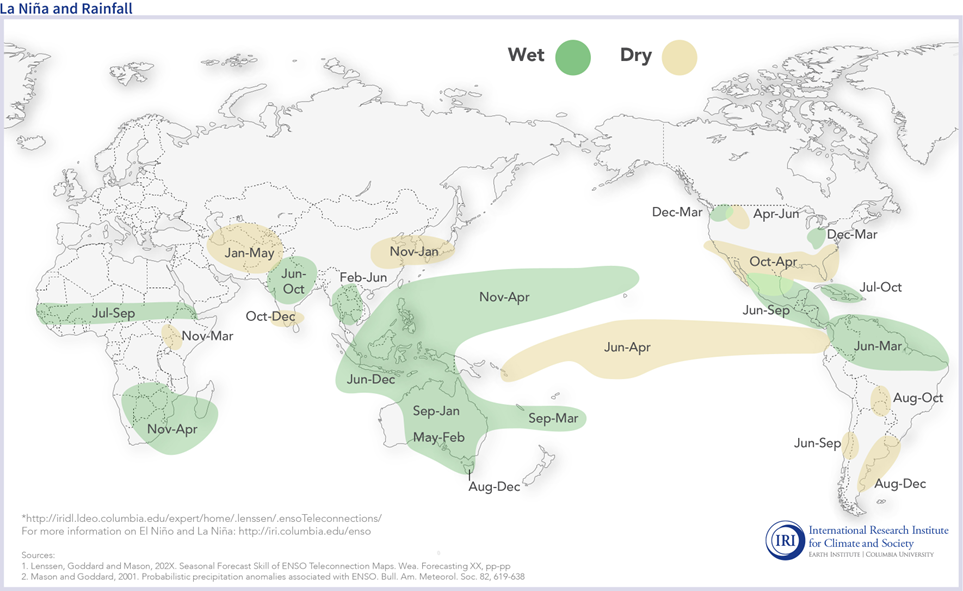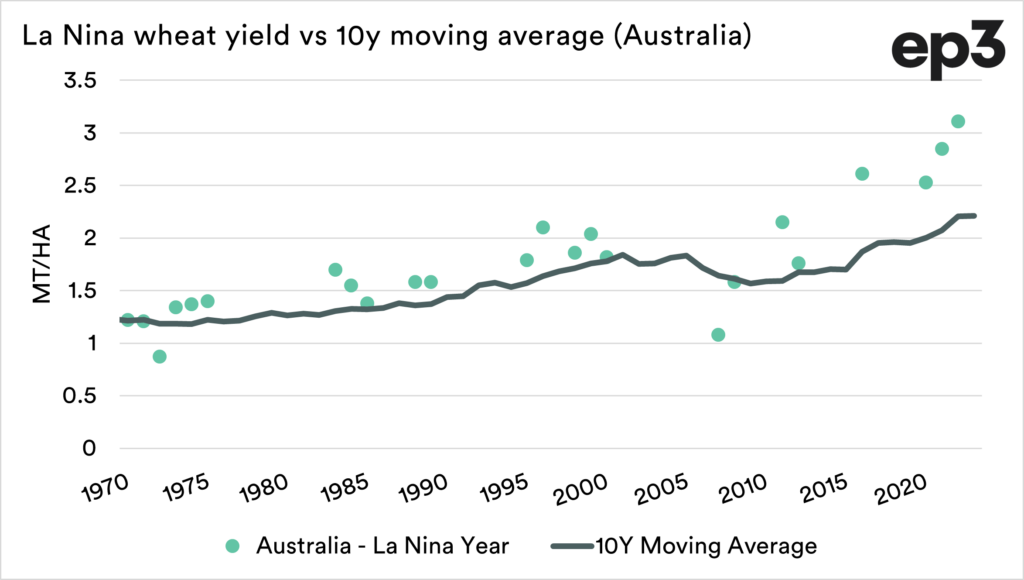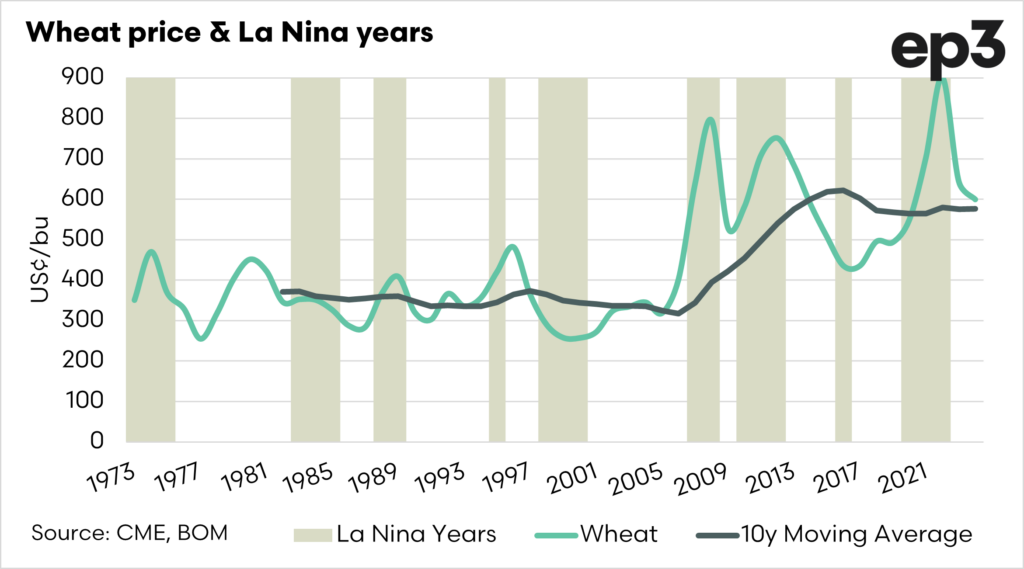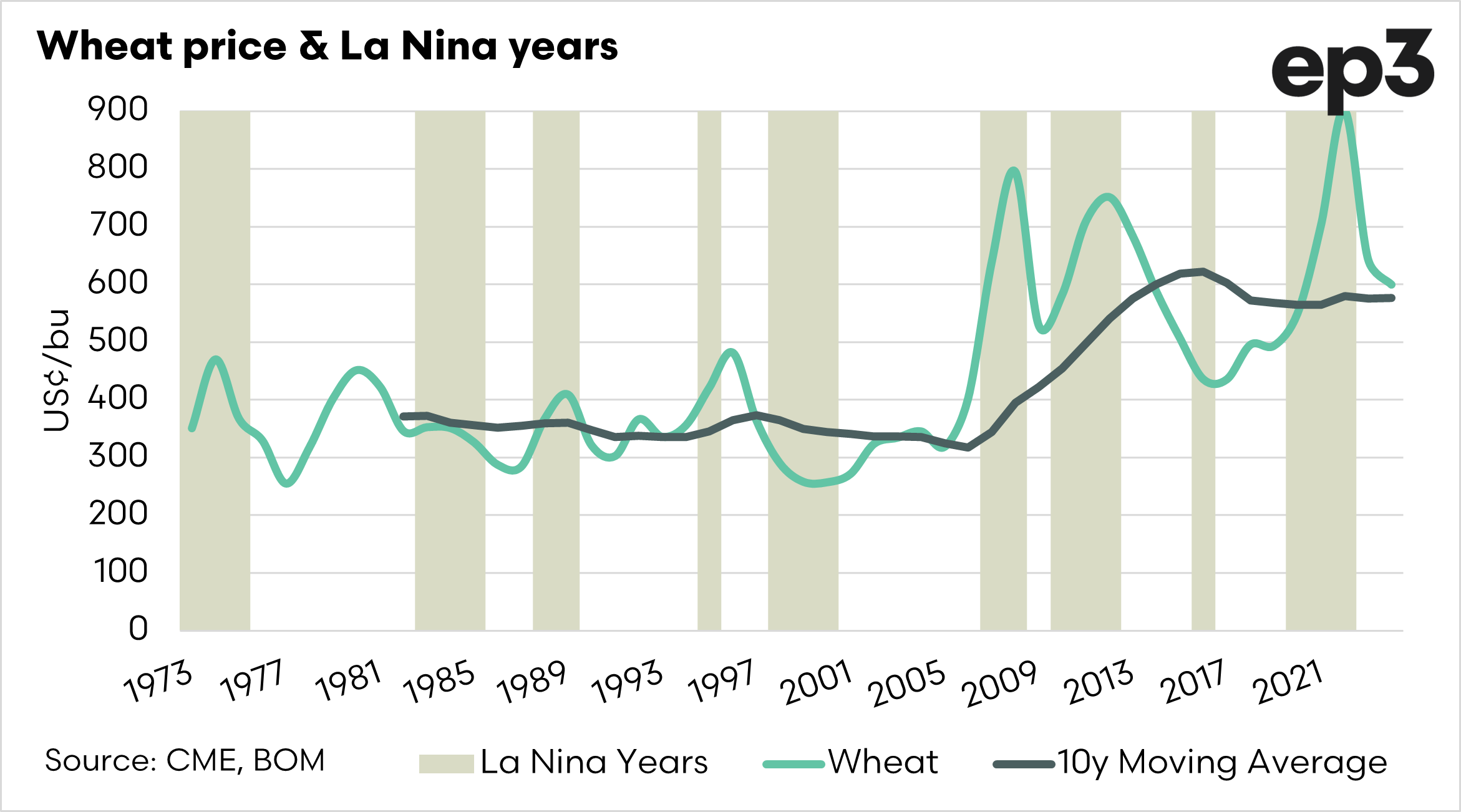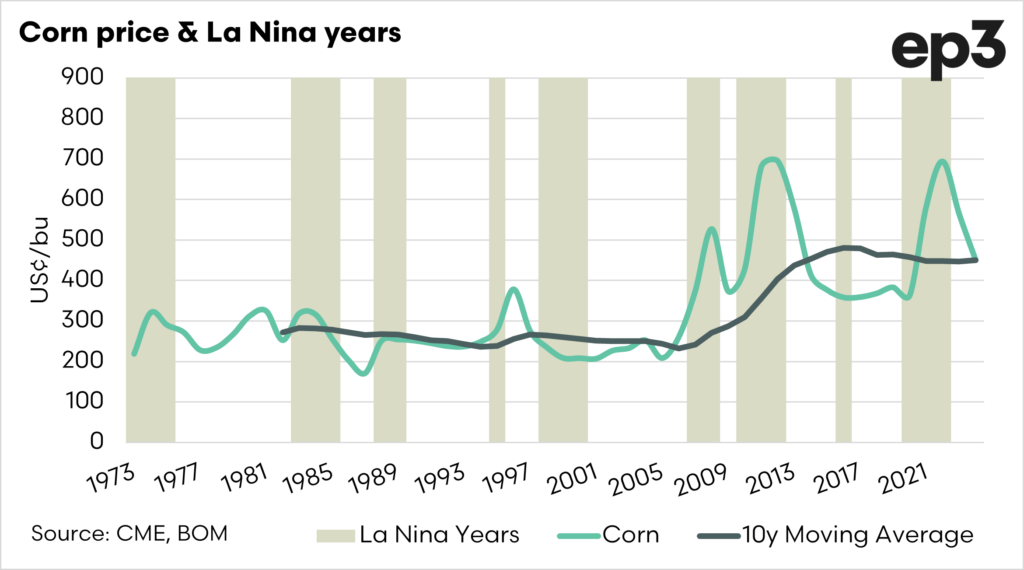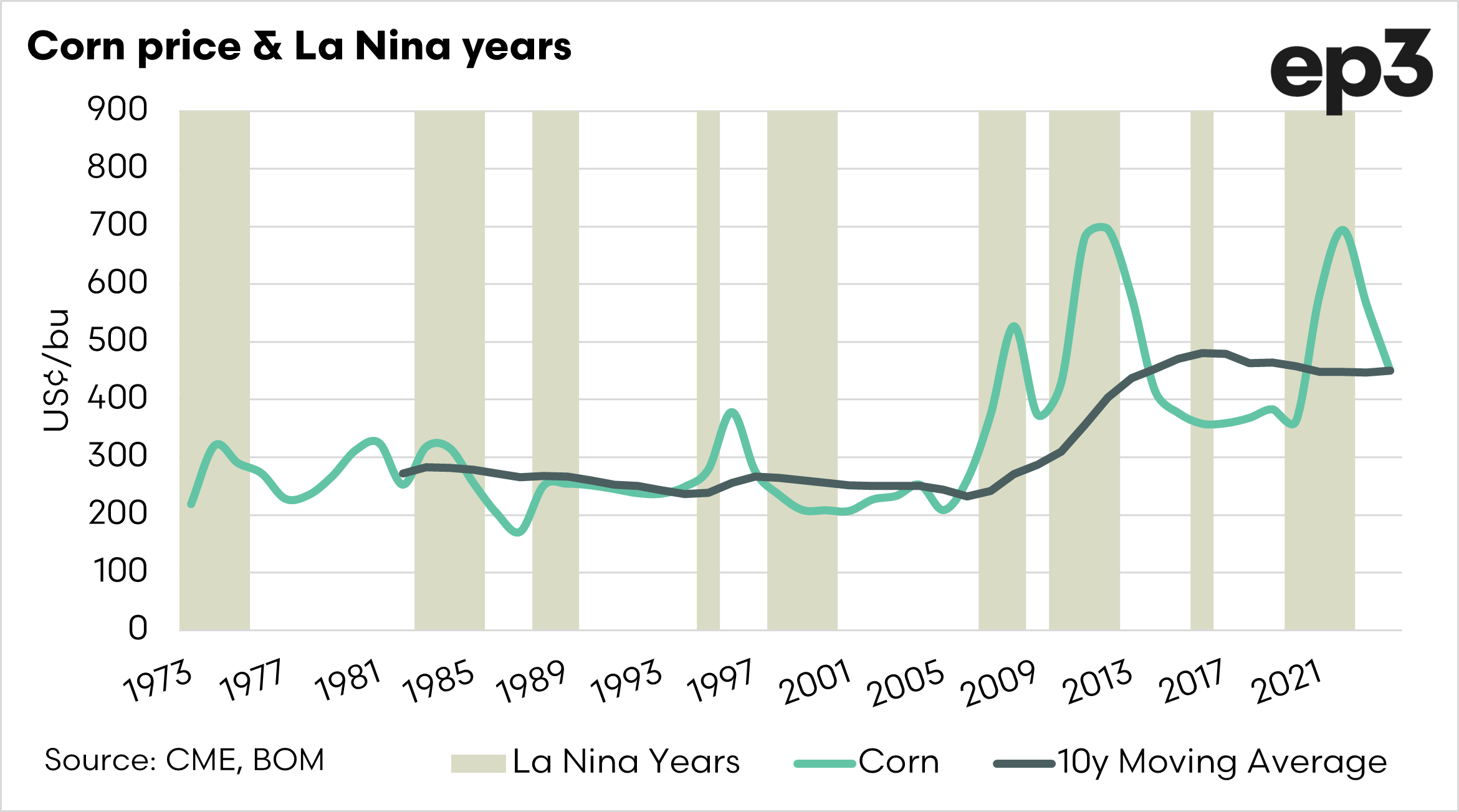Another great year for grain growers?

The Snapshot
- There are models pointing towards another year of La Nina.
- La Nina tends to bring wet weather to Australia, particularly on the east coast.
- Yields tend to be higher during La Nina periods.
- Other parts of the world can become drier.
- The lower yields in other parts of the world can hold a spur on grain pricing.
- Bear in mind that La Nina can bring wet weather, but it is not guaranteed.
The Detail
It’s early February, and we are already getting positive vibes about the coming cropping season.
Last year, Australia was in an El Nino phase, but it didn’t really bring the widespread dryness that is usually associated with an El Nino phase. In the end, Australia produced a decent crop.
Obviously, some areas missed out, but Australia is a large continent, which will always be the case.
There are models predicting a La Nina event, which is typically good for Australian agriculture. Let’s update on what that means.
The map below gives a good indication of the impact of La Nina around the world, and it is important to note that this weather event has a global reach, not just in our backyard.
Yields
In order to analyse the potential impact of La Nina on cropping in Australia, I have taken the yield data for wheat (on a national scale) from 1970 to the present and overlayed a ten-year moving average.
The dots are the yields for the years in which a La Nina was declared. I have used a ten-year moving average, as this displays the yields against recent timeframes. This is a better way to display as it can consider the general technology and practices used around the timeframe.
We can see that yields during periods of La Nina tend to be higher than the ten-year moving average.
Interestingly, the La Nina events in recent times have shown significantly higher positive yield impacts. I hypothesise that Australian farmers have become more efficient at using available moisture, which has supercharged the yields during periods of excess moisture (but I ain’t no agronomist).
So if a La Nina does transpire, which is not a guarantee, then we should, based on historical examples, find that Australian crop yields will be strong.
Price
Grain prices are driven by supply and demand, and the biggest factor moving supply is weather – and La Nina and El Nino have huge impacts on the world.
The charts below show the wheat and corn price, versus the ten-year moving average, with the la nina years highlighted.
There isn’t a huge correlation, but we often see large pricing peaks around La Nina periods.
If we see the map above, we know that many areas of the world can become drier. Obviously, grain prices are driven by a bunch of other factors, such as geopolitical events (war in Ukraine etc).
In my view, La Nina is positive for Australian producers because we can have higher yields, and other regions around the world can suffer.
Just remember, though, that La Nina increases the chance of a moist year, but it’s not guaranteed – just like El Nino doesn’t always bring dry.

